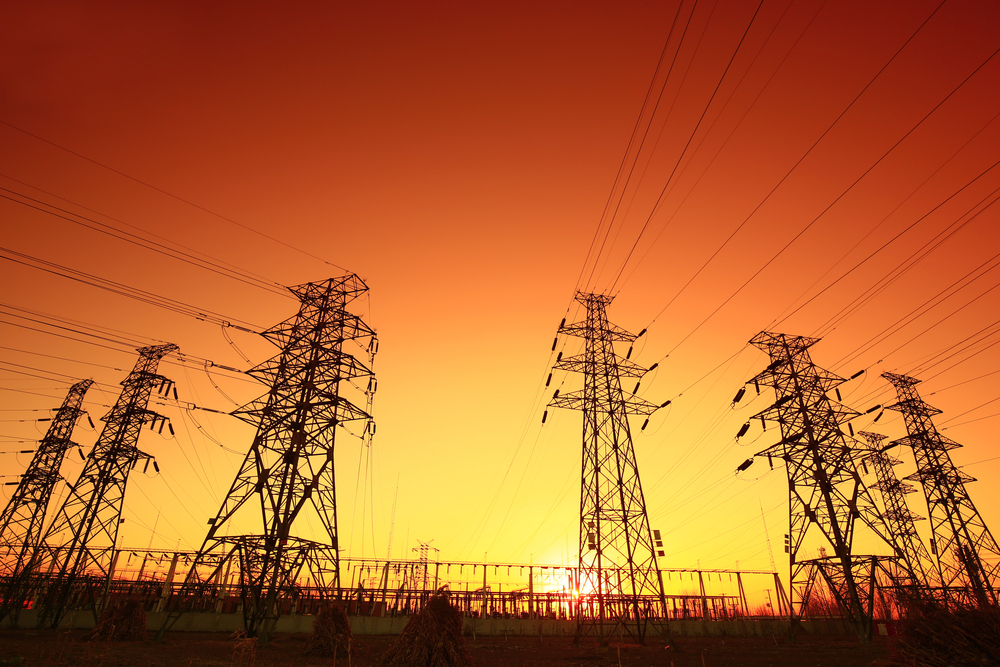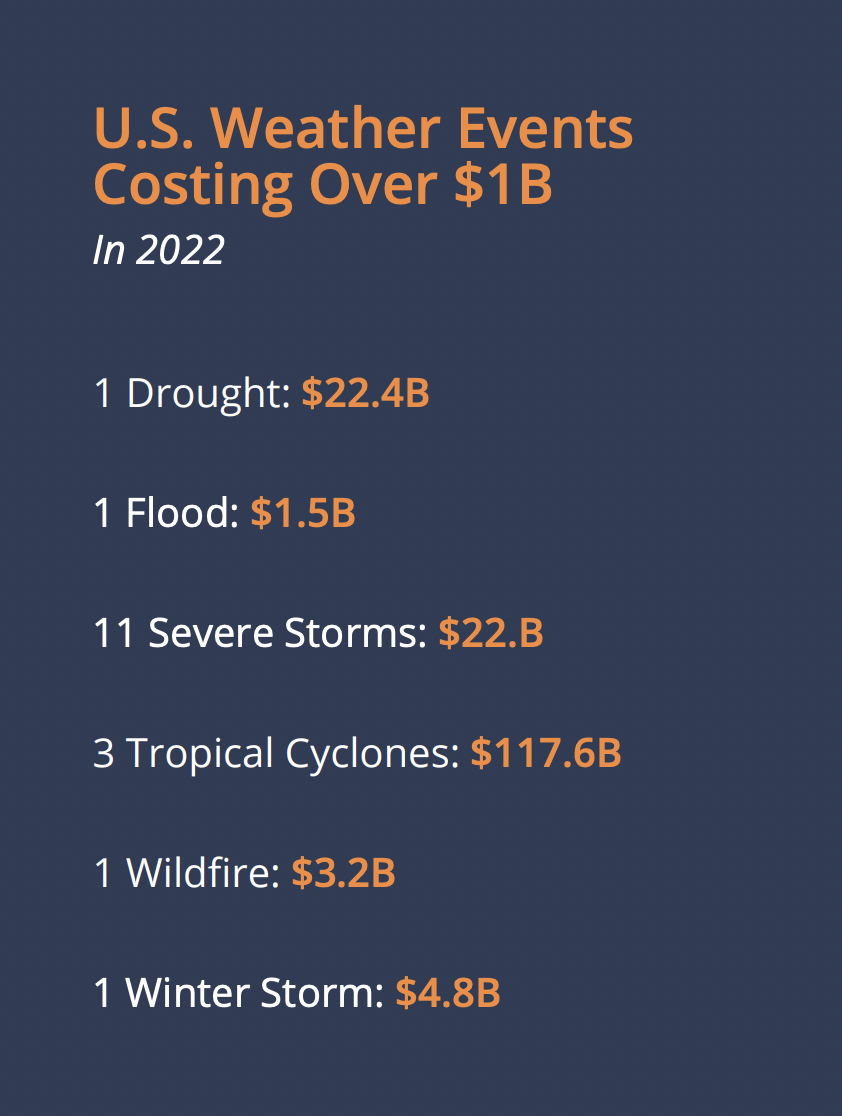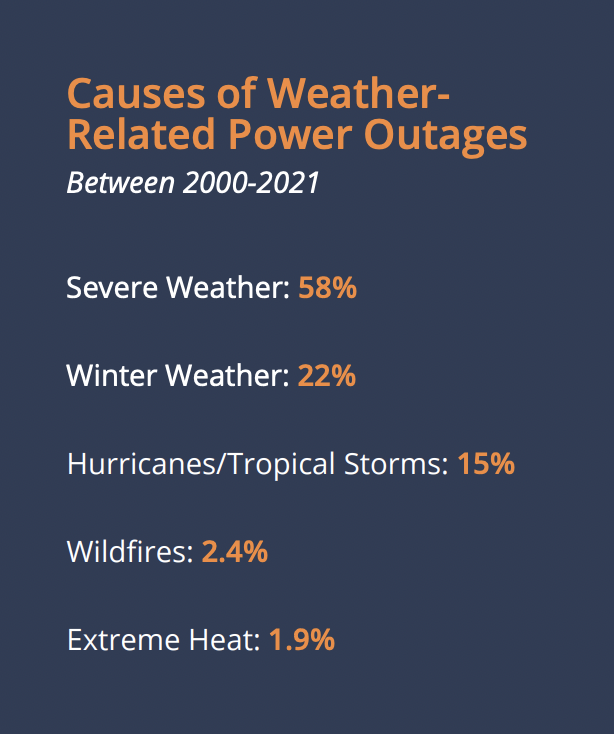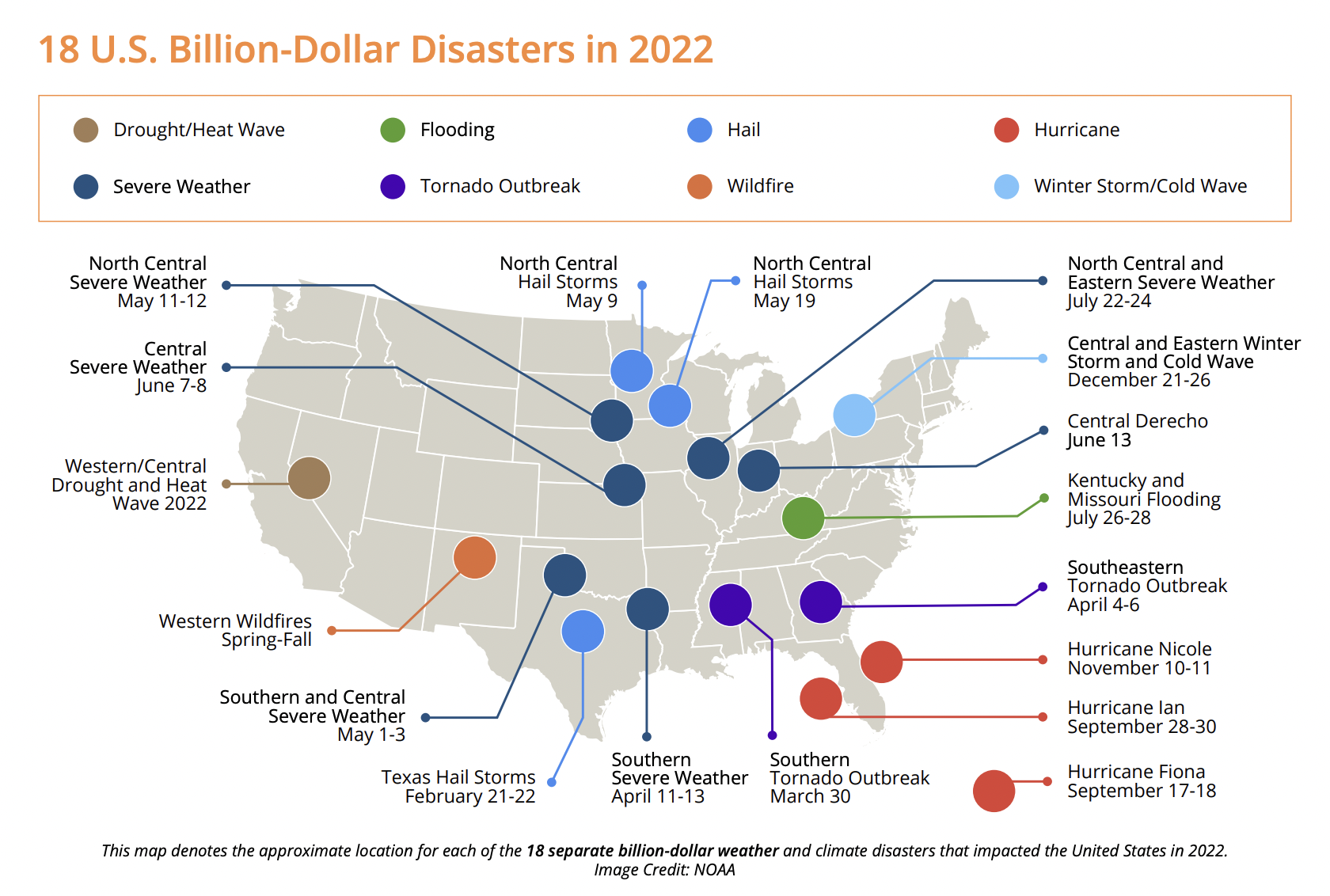Extreme Weather Costs the U.S. Billions Each Year — Is Your Facility at Risk?

Extreme weather is a year-round problem, costing the U.S. billions of dollars annually — including the high cost of power outages.
From hurricanes and winter storms to heatwaves and wildfires, weather events put your facility at risk of operational disruptions. As another summer approaches, the warnings are familiar: heatwaves will likely cause widespread outages. In fact, according to a recent Wall Street Journal article, the grid monitor warns two-thirds of the U.S. is at risk for summer blackouts. The Texas utility commission chair has raised the threat of power outages in his state. And the World Meteorological Organization predicts El Niño’s return, ushering in “record-breaking” temperatures worldwide.
With climate change raising the risk of more frequent extreme weather, the utility grids is in dire need of updates, and widespread decommissioning of coal power plants without consistent reliable baseload replacement, U.S. facilities need a long-term solution for resilient energy: microgrids.
Weather Events Cost the U.S. Billions in 2022
In 2022, the U.S. saw 18 major weather and climate events that cost over $1B each. Power outages significantly contribute to these enormous costs, as they can shut down businesses and entire regions for hours or days.

The cost of downtime for facilities varies widely, but many lose thousands of dollars per minute, while outages at industrial sites are even more expensive. The Department of Energy estimated in 2015 that blackouts cost U.S. businesses $150 billion yearly. Facilities in certain regions are more at risk — the states with the most reported weather-related power outages are Texas, Michigan, California, North Carolina, and Pennsylvania.
Along with the high cost of power outages, facilities in many areas face higher utility bills due to increased price volatility, capacity charges, and aged failing infrastructure replacement costs being passed on to the consumer. In addition, utility equipment can cause power quality issues for facilities, resulting in nuisance downtime, financial impacts, and even equipment failures.
Weather-Related Power Outages Are on the Rise

Most power outages are related to the weather. A 2022 report by Climate Central, a policy-neutral science communication nonprofit, found that between 2000-2021, weather events caused 83% of power outages. Flooding, storms, and winter weather routinely bring down power lines. Heatwaves or cold snaps can lead to load shedding or rolling blackouts due to increased energy usage taxing the grid. Utilities implement power safety shutoffs when wildfires are a risk. And aging grid infrastructure makes it more likely that bad weather will lead to outages.
The U.S. is also seeing more power outages related to weather events, partly due to the exacerbating effect of climate change. Between 2011-2021, the average annual number of weather-related power outages increased by roughly 78% compared to 2000-2010.
Microgrids Protect Facilities from Power Outages and Power Surges
The risk of weather-related blackouts remains high. Weather-related outages in 2021 were about 88% higher than the long-term average and 112% higher than the annual average between 2000 and 2021. In 2022, some states saw historic peak loads and outages due to weather events, including major heatwaves in Texas, California, and the Pacific Northwest. Winter Storm Elliot, which knocked out power to 1.5 million homes and businesses, is under investigation by the U.S. Federal Energy Regulatory Commission (FERC). In 2023 and 2024, the return of El Niño is expected to cause new weather extremes — although the last eight years broke heat records, La Niña actually had a cooling effect during that time.
This isn’t a problem that’s going to go away. Facilities that rely on the power grid alone are at increased financial and operational risk, facing not just weather-related outages but unpredictable power surges and rising utility bills.
On-site power generation is the solution. Unison Energy designs, builds, owns, and maintains microgrids that can offer your facility energy independence and resiliency, resolving power quality issues and providing confidence that your site will stay operational no matter the state of the grid. Our microgrids will support your site even during lengthy outages, while reducing your electricity bill and carbon footprint on a continual basis.
Learn more about the resiliency benefits of a Unison Energy microgrid. Click here to get in touch.
Energy insights, delivered
Subscribe for more content.

